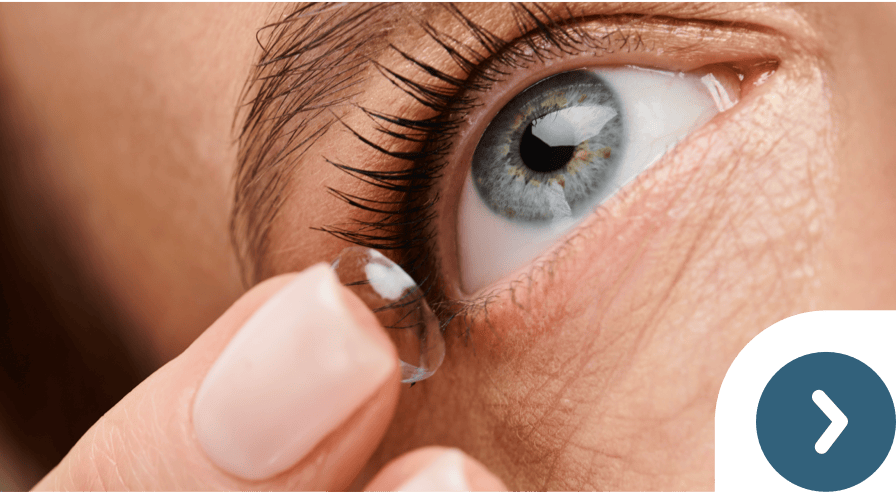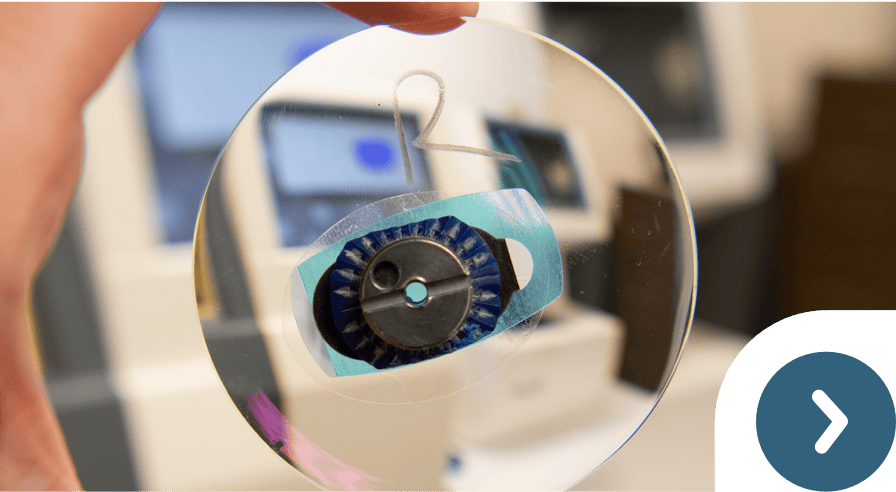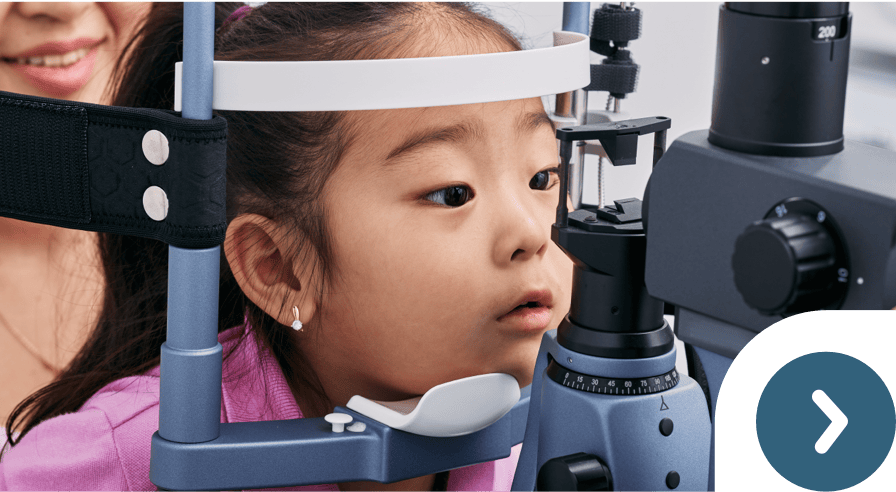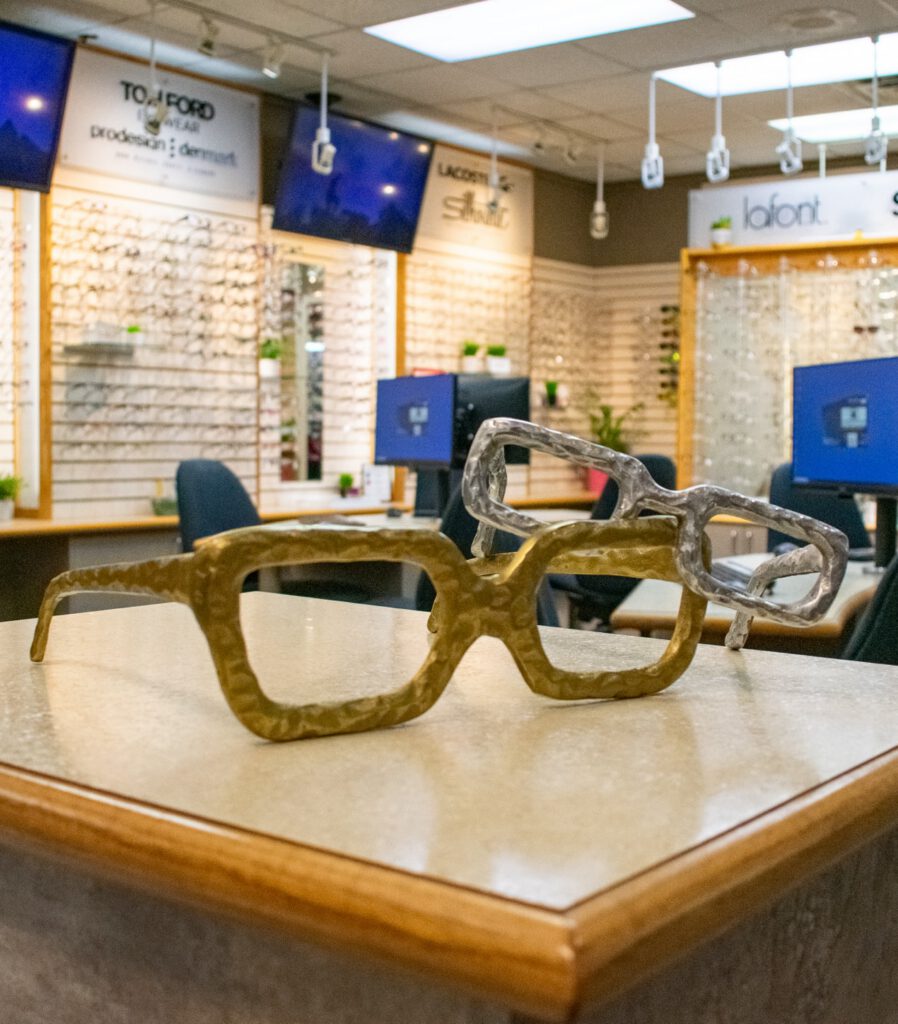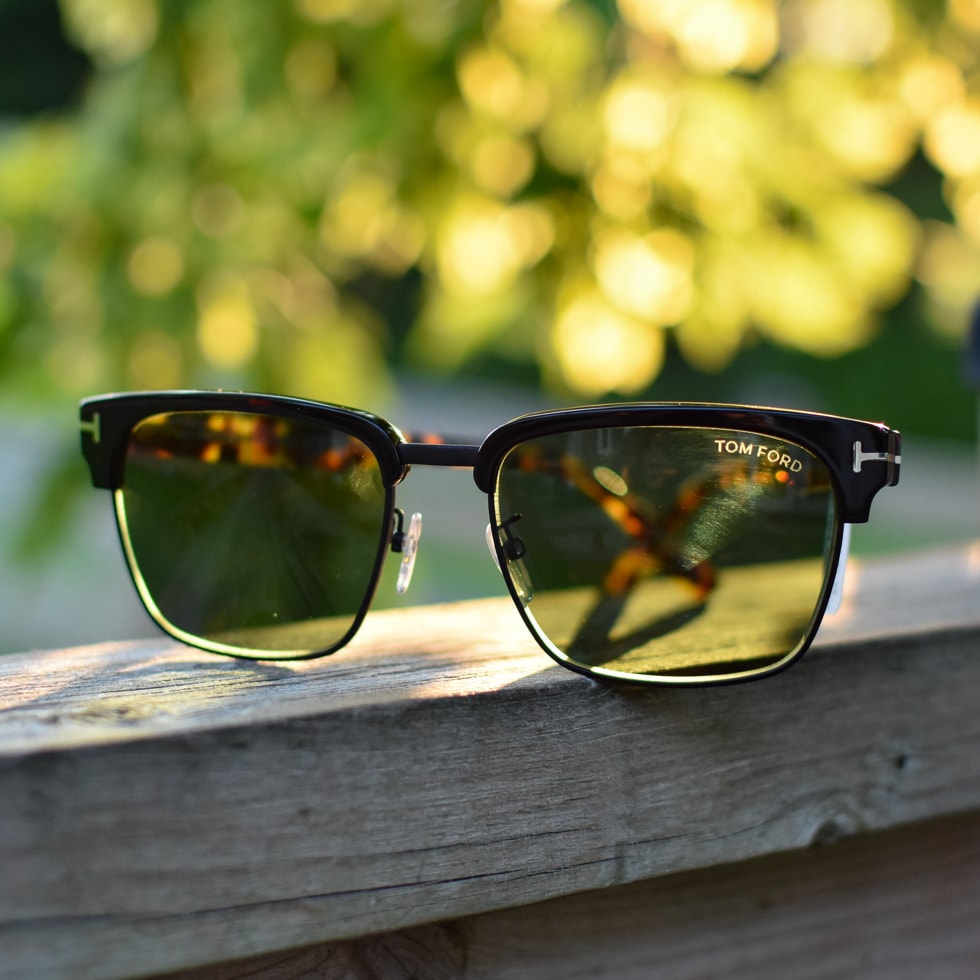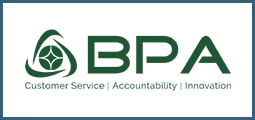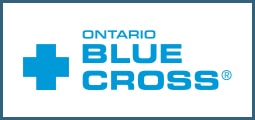Navigating a prescription can feel like reading a secret code. But whether you’re squinting at tiny text on a screen or admiring the vibrant colours of a sunset, we all treasure clear vision—so an accurate prescription is a must!
Contact lens prescriptions and glasses prescriptions are not the same. So whether you’re sticking with the cozy familiarity of your favourite pair of glasses or making the jump to the comfort offered by contact lenses, your optometrist can help you see the world clearly.
Why Contact Lens Prescriptions Are Different
Contact lenses and glasses both help you see clearly, but they work their magic in different ways. Glasses sit 14–24mm from your eyes, while contact lenses get up close and personal, sitting right on your cornea, the clear dome at the front of the eye. This distance may seem tiny, but it changes how manufacturers make each lens.
With glasses, the lens power takes into account the gap between your eyes and the lenses. But contact lenses need a prescription that considers your eye’s shape, your tear film, and how your lenses sit against your corneas. That’s why contact lens prescriptions come with extra details like base curve and diameter—fancy terms for getting that perfect fit!
How to Read a Prescription
A prescription can look confusing when you first see it, but, once you understand what it’s saying, you’ll probably have a better sense of why contact lenses need that little bit extra. Think of all the letters and numbers as a blueprint. Using this blueprint, you’re able to get the pair of contacts or eyeglasses—or even prescription sunglasses—that suit your needs.
Let’s break down what you might see on your prescriptions. A typical glasses prescription includes:
- Sphere (SPH): Indicates the lens power needed to correct nearsightedness or farsightedness. A minus (-) is for nearsightedness and a plus (+) is for farsightedness. The number that follows the plus or minus measures the lens power required in diopters.
- Cylinder (CYL): The power needed to correct astigmatism, if present.
- Axis: Specifies the orientation of astigmatism correction as a number between 1–180
- Addition (ADD): If you need additional power for bifocals or progressive lenses, this is where you’ll find it.
In addition to the information above, a contact lens prescription includes:
- Base Curve (BC): Measures the required curvature of the contact lens
- Diameter (DIA): Indicates the lens’s size from 1 side to the other.
- Brand or Material: Specifies the type of contact lens material your optometrist has recommended for your eyes.
This information is essential for getting contact lenses that fit your eye like they should. That’s why the first thing we do when we get you a new pair of contact lenses is bring you in for a contact lens fitting.
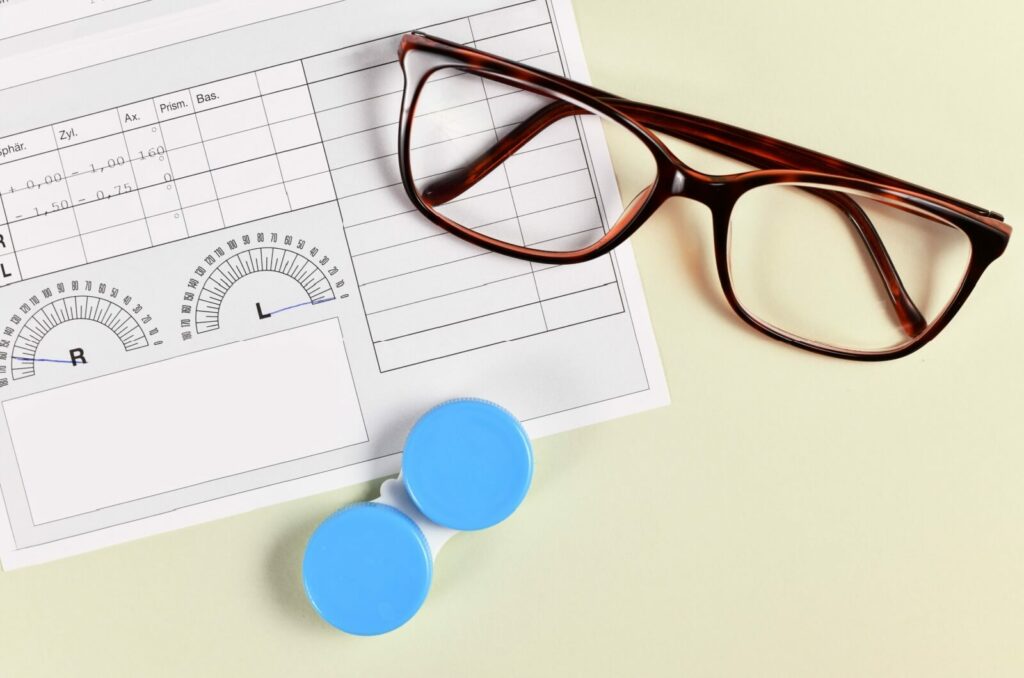
What Happens During a Contact Lens Fitting?
Here you are; you’ve decided to try contact lenses. Whether you’re looking to go frameless as much as possible or saving your contact lenses for a special occasion, a contact lens fitting is an essential part of the process. Every eye is as unique as a fingerprint, so even if it might be a bit of a journey, we hope it’s worth it!
Here’s what you can expect during a fitting:
- Initial examination: Your optometrist will conduct a comprehensive eye examination to assess your vision needs and eye health. For example, you may need to treat dry eyes before getting your lenses.
- Measurements: Your contact lenses need to fit your specific profile, so, using precision diagnostic technology, your optometrist can measure the curvature and diameter of your corneas to find the perfect fit for you.
- Trial lenses: You wouldn’t buy new shoes without trying them on. In much the same way, you’ll be given trial lenses to wear for a short period, allowing your optometrist to observe the fit and your comfort level.
- Instruction: Finally, you’ll receive guidance on how to insert, remove, and care for your contact lenses.
Getting properly fitted contact lenses isn’t just about comfort. Ill-fitting lenses can cause blurry vision, eye strain, or even scratches on your cornea. Get the correct lenses and tell your optometrist if they don’t feel right!
Types of Contact Lenses: Soft & Rigid Gas Permeable (RGP)
When it comes to contact lenses, you’ve got 2 main types: soft lenses and rigid gas permeable (RGP) lenses. Each has its own perks, so the right choice comes down to your needs.
Soft Contact Lenses
Soft lenses are like the comfy sweats of the lens world. They’re popular because they usually feel great when you first put them in, and they have a short adjustment period. Made from a gel-like, water-rich plastic, they easily hug your eye’s surface. They’re nice if you’re planning to wear contacts occasionally, since you can snag these as daily disposables or go bi-weekly or monthly.
They’re awesome if you love sports or have an on-the-go lifestyle since they’re more stable on the eye. However, they are less durable and can dry out.
Rigid Gas Permeable (RGP) Lenses
Now, RGP lenses are the sturdy types—though they’re still fairly flexible for being “rigid.” They may take a bit more time getting used to, but in exchange, you get sharper vision than their softer cousins.
These contact lenses can be excellent for those with astigmatism or complex prescriptions since they don’t need to conform to the eye’s shape. They’re durable lenses that let your eyes breathe better, helping dry eyes stay hydrated longer. However, you’ll need to take extra time at night to clean and put them away properly.
The Final Word on Prescriptions
Understanding the distinct requirements of contact lens and glasses prescriptions can make a significant difference in your vision care. A precise prescription tailored to your needs can enhance comfort and, most importantly, support your eye health.
The Westmount Optometrists team is here to help you take control of your vision! You’re more than your sphere and base curve, so we pride ourselves on offering personalized fittings and care.
Book an appointment with us today and see the brighter side of life!


